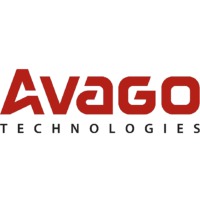Traditional datacenters – server sprawl leads to gross inefficiencies, high costs
Historically, datacenter servers have been built with fixed designs tailored to specific applications and requiring long lead times. These purpose-built systems require complete replacement when the time comes for processor, storage, memory or other component upgrades. They are also usually difficult to redeploy for other applications or use cases, and require individual management. Ultimately they contribute to server sprawl as more application-specific systems are brought online – a bloat that leads to poor utilization, high operating expenses and rampant power and cooling costs.

The Open Compute Project – streamlining scalable, rack scale computing
The Open Compute Project was formed to design and enable the most efficient server, storage and datacenter hardware designs for scalable computing. The focus of the project is on customer-designed, simple, cost-effective open technologies that can be acquired from multiple sources and efficiently deployed. Early proponents include Facebook, Rackspace, university and government labs, and Wall Street banks.
Open Compute servers are simple and modular, enabling a single design to be configured for different purposes and supporting common applications, such as high-performance computing (HPC), general-purpose server and storage-server applications. The modularity of Open Compute components server hardware components to be disaggregated and easily optimized, paving the way to rack scale computing. Compared to traditional servers, material and shipping costs of Open Compute servers are lower, and upgrades are simpler and more cost-effective. Open Compute servers also support a common management framework across nodes from different suppliers, enable the design of low-cost building block storage and energy-efficient datacenters, and make it easy for IT organizations to better match hardware to the software that it runs.
Currently, the Open Compute Project defines designs and standards for dual-processor server motherboards, high-efficiency self-cooled server power supplies, a simple screw-less server chassis, designs for 42U server racks and 48 volt DC battery cabinets, an integrated DC/AC power distribution scheme, a 100% air-side economizer and an evaporative cooling system to support the servers.
Open Compute transforms the server design and delivery model. Traditionally, original equipment manufacturers (OEMs) define server architectures and deliver the systems to end customers. With Open Compute, end customers define server architectures and original design manufacturers (ODMs) or OEMs deliver the solutions. Open Compute solutions also integrate the latest technologies such as flash cache for fast storage.
New datacenter ecosystem partnerships to emerge
As rapid growth continues in private and public clouds and Web 2.0 deployments, Open Compute will give rise to new ecosystem partnerships between large-scale end customers and tier-one storage solution providers like Avago . Like never before, customers will work directly with Avago and other providers to deploy innovative products and architectures.
Avago central to the Open Compute ecosystem
Avago is leveraging its deep history of collaboration in its work with Open Compute. Avago's work with ODMs on Open Compute reference designs and implementations is very similar to Avago's traditional business with OEMs. In fact, Avago helped develop and deliver one of the most popular Open Compute platforms – OpenVault.
Avago has two key advantages in an Open Compute-style ecosystem. First, because Avago offers the de facto standard for storage products and solutions, it is central to the Open Compute ecosystem. As the industry migrates to hyperscale datacenters, more Open Compute or Open Compute-inspired products will be deployed, and Avago will be deeply involved. Secondly, Open Compute is an excellent venue for Avago to leverage its collaboration model to work directly with end customers who understand the technology problems they need solved, who need the enterprise expertise of Avago to solve them while improving datacenter capital and operating expenditures, and who are uninhibited by legacy products and businesses.
Avago offers the broadest portfolio of server storage products and solutions, and brings decades of storage expertise to the design of more efficient, rack scale architectures. As the industry migrates towards hyperscale datacenters, more Open Compute or Open Compute-inspired products will be deployed, and Avago will be deeply involved. Open Compute is an excellent venue for Avago to leverage its collaboration model to work directly with end customers who are looking for solutions to specific technology challenges. Together, Open Compute and Avago will help reduce datacenter capital and operating expenditures, and enable massive new datacenter architectures.
Avago storage silicon is specified in Open Compute servers and directly supports Facebook and other Open Compute server builders. Avago is actively engaged in several of the workgroups, and with all Open Compute ODM manufacturers.
Advertisement
Learn more about Avago Technologies





